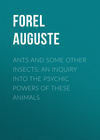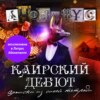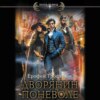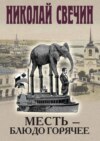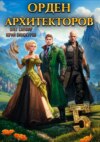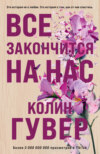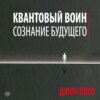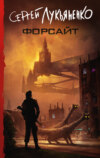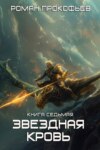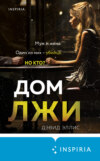Читать книгу: «Ants and Some Other Insects: An Inquiry Into the Psychic Powers of These Animals», страница 3
THE PROVINCE OF COGNITION
Many insects (perhaps all, in a more rudimental condition) possess memory, i. e., they are able to store up sense-impressions in their brains for subsequent use. Insects are not merely attracted directly by sensory stimuli, as Bethe imagines. Huber, myself, Fabre, Lubbock, Wasmann, Von Buttel-Reepen, have demonstrated this fact experimentally. That bees, wasps, etc., can find their way in flight through the air, notwithstanding wind and rain (and hence under circumstances precluding the existence of any possible odoriferous trail), and even after the antennæ have been cut off, to a concealed place where they have found what they desired, though this place may be quite invisible from their nest, and this even after the expiration of days and weeks, is a fact of special importance as proof of the above assertion. It can be shown that these insects recognise objects by means of their colors, their forms, and especially by their position in space. Position they perceive through the mutual relations and succession of the large objects in space, as these are revealed to them in their rapid change of place during flight in their compound eyes (shifting of retinal images). Especially the experiments performed by Von Buttel-Reepen and myself leave no doubt concerning this fact. Additional proof of a different nature is furnished by Von Buttel, who found that ether or chloroform narcosis deprives bees of all memory. By this means enemies can be converted into friends. Under these circumstances, too, all memory of locality is lost and must be reacquired by means of a new flight of orientation. An animal, however, certainly cannot forget without having remembered.
The topochemical antennal sense also furnishes splendid proofs of memory in ants, bees, etc. An ant may perform an arduous journey of thirty meters from her ruined nest, there find a place suitable for building another nest, return, orienting herself by means of her antenna, seize a companion who forthwith rolls herself about her abductrix, and is carried to the newly selected spot. The latter then also finds her way to the original nest, and both each carry back another companion, etc. The memory of the suitable nature of the locality for establishing a new nest must exist in the brain of the first ant or she would not return, laden with a companion, to this very spot. The slave-making ants (Polyergus) undertake predatory expeditions, led by a few workers, who for days and weeks previously have been searching the neighborhood for nests of Formica fusca. The ants often lose their way, remain standing and hunt about for a long time till one or the other finds the topochemical trail and indicates to the others the direction to be followed by rapidly pushing ahead. Then the pupæ of the Formica fusca nest, which they have found, are brought up from the depths of the galleries, appropriated and dragged home, often a distance of forty meters or more. If the plundered nest still contains pupæ, the robbers return on the same or following days and carry off the remainder, but if there are no pupæ left they do not return. How do the Polyergus know whether there are pupæ remaining? It can be demonstrated that smell could not attract them from such a distance, and this is even less possible for sight or any other sense. Memory alone, i. e., the recollection that many pupæ still remain behind in the plundered nest can induce them to return. I have carefully followed a great number of these predatory expeditions.
While Formica species follow their topochemical trail with great difficulty over new roads, they nevertheless know the immediate surroundings of their nest so well that even shovelling away the earth can scarcely disconcert them, and they find their way at once, as Wasmann emphatically states and as I myself have often observed. That this cannot be due to smelling at long range can be demonstrated in another manner, for the olfactory powers of the genus Formica, like those of honey-bees, are not sufficiently acute for this purpose, as has been shown in innumerable experiments by all connoisseurs of these animals. Certain ants can recognise friends even after the expiration of months. In ants and bees there are very complex combinations and mixtures of odors, which Von Buttel has very aptly distinguished as nest-odor, colony- (family-) odor, and individual odor. In ants we have in addition a species-odor, while the queen-odor does not play the same rôle as among bees.
It follows from these and many other considerations that the social Hymenoptera can store up in their brains visual images and topochemical odor-images and combine these to form perceptions or something of a similar nature, and that they can associate such perceptions, even those of different senses, especially sight, odor, and taste, with one another and thereby acquire spatial images.
Huber as well as Von Buttel, Wasmann, and myself have always found that these animals, through frequent repetition of an activity, journey, etc., gain in the certainty and rapidity of the execution of their instincts. Hence they form, very rapidly to be sure, habits. Von Buttel gives splendid examples of these in the robber-bees, i. e., in some of the common honey-bees that have acquired the habit of stealing the honey from the hives of strangers. At first the robbers display some hesitation, though later they become more and more impudent. But he who uses the term habit, must imply secondary automatism and a pre-existing plastic adaptability. Von Buttel adduces an admirable proof of this whole matter and at the same time one of the clearest and simplest refutations of Bethe’s innumerable blunders, when he shows that bees that have never flown from the hive, even though they may be older than others that have already flown, are unable to find their way back even from a distance of a few meters, when they are unable to see the hive, whereas old bees know the whole environment, often to a distance of six or seven kilometers.
It results, therefore, from the unanimous observations of all the connoisseurs that sensation, perception, and association, inference, memory and habit follow in the social insects on the whole the same fundamental laws as in the vertebrates and ourselves. Furthermore, attention is surprisingly developed in insects, often taking on an obsessional character and being difficult to divert.
On the other hand, inherited automatism exhibits a colossal preponderance. The above-mentioned faculties are manifested only in an extremely feeble form beyond the confines of the instinct-automatism stereotyped in the species.
An insect is extraordinarily stupid and inadaptable to all things not related to its instincts. Nevertheless I succeeded in teaching a water-beetle (Dytiscus marginalis) which in nature feeds only in the water, to eat on my table. While thus feeding, it always executed a clumsy flexor-movement with its fore-legs which brought it over on its back. The insect learned to keep on feeding while on its back, but it would not dispense with this movement, which is adapted to feeding in the water. On the other hand, it always attempted to leap out of the water (no longer fleeing to the bottom of the vessel) when I entered the room, and nibbled at the tip of my finger in the most familiar manner. Now these are certainly plastic variations of instinct. In a similar manner some large Algerian ants which I transplanted to Zurich, learned during the course of the summer months to close the entrance of their nest with pellets of earth, because they were being persecuted and annoyed by our little Lasius niger. In Algiers I always saw the nest-opening wide open. There are many similar examples which go to show that these tiny animals can utilise some few of their experiences even when this requires a departure from the usual instincts.
That ants, bees, and wasps are able to exchange communications that are understood, and that they do not merely titillate one another with their antennæ as Bethe maintains, has been demonstrated in so many hundred instances, that it is unnecessary to waste many words on this subject. The observations of a single predatory expedition of Polyergus, with a standing still of the whole army and a seeking for the lost trail, is proof sufficient of the above statement. But, of course, this is not language in the human sense! There are no abstract concepts corresponding to the signs. We are here concerned only with hereditary, instinctively automatic signs. The same is true of their comprehension (pushing with the head, rushing at one another with wide-open mandibles, titillation with the antennæ, stridulatory movement of the abdomen, etc.). Moreover, imitation plays a great rôle. Ants, bees, etc., imitate and follow their companions. Hence it is decidedly erroneous (and in this matter Wasmann, Von Buttel, and myself are of but one opinion) to inject human thought-conception and human ratiocination into this instinct-language, as has been done to some extent, at least, even by Pierre Huber, not to mention others. It is even very doubtful whether a so-called general sensory idea (i. e., a general idea of an object, like the idea “ant,” “enemy,” “nest,” “pupa”) can arise in the emmet brain. This is hardly capable of demonstration. Undoubtedly perception and association can be carried on in a very simple way, after the manner of insects, without ever rising to such complex results. At any rate proofs of such an assumption are lacking. But what exists is surely in itself sufficiently interesting and important. It gives us at least an insight into the brain-life of these animals.
Better than any generalisations, a good example will show what I mean.
Plateau had maintained that when Dahlia blossoms are covered with green leaves, bees nevertheless return to them at once. At first he concealed his Dahlias incompletely (i. e., only their ray-florets), afterwards completely, but still in an unsatisfactory manner, and inferred from the results that bees are attracted by odor and not by sight.
a. In a Dahlia bed visited by many bees and comprising about forty-three floral heads of different colors, I covered first seventeen and then eight at 2.15 P. M., September 10th, with grape-leaves bent around them and fastened with pins.
b. Of four I covered only the yellow disc;
c. Of one, on the other hand, I covered only the outer ray-florets, leaving the disc visible.
So many bees were visiting the Dahlias that at times there were two or three to a flower.
Result: Immediately all the completely covered flowers ceased to be visited by the bees. Dahlia (c) continued to be visited like those completely visible. The bees often flew to Dahlias (b) but at once abandoned them; a few, however, succeeded in finding the disc beneath the leaves.
Then as soon as I removed the covering from a red Dahlia the bees at once flew to it; and soon a poorly concealed specimen was detected and visited. Later an inquisitive bee discovered the entrance to a covered Dahlia from the side or from below. Thenceforth this bee, but only this one, returned to this same covered flower.
Nevertheless several bees seemed to be seeking the Dahlias which had so suddenly disappeared. Towards 5.30 o’clock some of them had detected the covered flowers. Thenceforth these insects were rapidly imitated by the other bees, and in a short time the hidden flowers were again being visited. As soon as a bee had discovered my imposition and found the entrance to a hidden flower, she flew in her subsequent journeys, without hesitation to the concealed opening of the grape-leaf. As long as a bee had merely made the discovery by herself, she remained unnoticed by the others. When this was accomplished by several, however, (usually by four or five,) the others followed their example.
Plateau, therefore, conducted his experiments in a faulty manner and obtained erroneous results. The bees still saw the Dahlias which he at first incompletely concealed. Then, by the time he had covered them up completely, but only from above, they had already detected the fraud and saw the Dahlias also from the side. Plateau had failed to take into consideration the bee’s memory and attention.
September 13th I made some crude imitations of Dahlias by sticking the yellow heads of Hieracium (hawkweed) each in a Petunia flower, and placed them among the Dahlias. Neither the Petunias nor the Hieracium had been visited by the bees. Nevertheless many of the honey and humble-bees flew at first to the artefacts in almost as great numbers as to the Dahlias, but at once abandoned the flowers when they had detected the error, obviously by means of their sense of smell. The same results were produced by a Dahlia, the disc of which had been replaced by the disc of a Hieracium.
As a control experiment I had placed a beautiful, odorous Dahlia disc among the white and yellow Chrysanthemums which had been neglected by the bees. For a whole half hour the bees flew by only a few centimeters above the disc without noticing it; not till then was it visited by a bee that happened to be followed by a second. From this moment the Dahlia disc which lay in the path of flight was visited like the others, whereas on the other hand the Petunia-Hieracium artefacts, now known to be fraudulent, were no longer noticed.
Plateau has demonstrated that artificial flowers, no matter how carefully copied from the human standpoint, are not noticed by insects. I placed artefacts of this description among the Dahlias. They remained in fact entirely neglected. Perhaps, as above suggested, the bees are able to distinguish the chlorophyll colors from other artificial hues, owing to admixtures of the ultra-violet rays, or by some other means. But since Plateau imagines that the artificial flowers repel insects, I cut out, Sept. 19th, the following rather crude paper-flowers:
α. A red flower;
β. A white flower;
γ. A blue flower;
δ A blue flower, with a yellow center made from a dead leaf;
ε. A rose-colored piece of paper with a dry Dahlia disc;
ζ. A green Dahlia leaf (unchanged).
It was nine o’clock in the morning. I placed a drop of honey on each of the six artefacts mounted among the Dahlias. For a quarter of an hour many bees flew past, very close to my artefacts but without perceiving and hence without smelling the honey. I went away for an hour. On my return artefact δ was without honey, and must therefore have been discovered by the bees. All the others had remained quite untouched and unnoticed.
With some difficulty I next undertook to bring artefact α very close to a bee resting on a Dahlia. But the attention of the bee was so deeply engrossed by the Dahlia that I had to repeat the experiment four or five times till I succeeded in bringing the honey within reach of her proboscis. The insect at once began to suck up the honey from the paper-flower. I marked the bee’s back with blue paint so that I might be able to recognise her, and repeated the experiment with β and ε. In these cases one of the bees was painted yellow, the other white.
Soon the blue bee, which had in the meantime gone to the hive, returned, flew at once to α, first hovering about it dubiously, then to δ, where she fed, then again to α, but not to the Dahlias. Later the yellow bee returned to β and fed, and flew to α and δ where she again fed, but gave as little heed to the Dahlias as did the blue bee.
Thereupon the white bee returned seeking ε, but failing to find it, at once went to feeding on some of the Dahlias. But she tarried only a moment on each Dahlia as if tortured by the idée fixe of honey. She returned to the artefacts, the perception of which, however, she was not quite able to associate with the memory of the honey flavor. At last she found a separate piece of ε, which happened to be turned down somewhat behind, and began lapping up the honey.
Thenceforth the three painted bees, and these alone, returned regularly to the artefacts and no longer visited the Dahlias. The fact is of great importance that the painted bees entirely of their own accord, undoubtedly through an instinctive inference from analogy, discovered the other artefacts as soon as their attention had been attracted by the honey on one of them, notwithstanding the fact that the artefacts were some distance from one another and of different colors. For were not the Dahlias, too, which they had previously visited, of different colors? Thus the blue bee flew to α, β, γ, and δ, the yellow to β, α, δ, and γ, the white ε, α, β, and δ. Matters continued thus for half an hour. The hidden green ζ was not found, evidently because it was indistinguishable from the green foliage.
Finally one bee, by herself, having had in all probability her attention attracted by the three others, came to δ and fed. I marked her with carmine. Thereupon she flew to α and drove the blue bee away. Another bee was attracted to ε of her own accord and was painted with cinnobar. Still another bee came by herself to β and was painted green. It was now 12.30 o’clock. The experiment had therefore lasted more than three hours, and during this time only six bees had come to know the artefacts, while the great majority still kept on visiting the Dahlias. But now the other bees began to have their attention attracted by the visitors to the artefacts. One, then two, then three, and finally more new ones followed, and I had not sufficient colors with which to mark them. Every moment I was obliged to replenish the honey. Then I went to dinner and returned at 1.25. At this moment seven bees were feeding on β, two on α, one on γ, three on δ, the white one alone on ε. More than half of all these were new, unpainted followers. Now a veritable swarm of bees threw themselves on the artefacts and licked up the last traces of the honey. Then for the first time, after more than four hours, a bee from the swarm discovered the honey on the artefact ζ, which on account of its color had remained concealed up to this time!
As a pack of hounds throws itself on an empty skeleton, the swarm of bees, now completely diverted from the Dahlias, cast themselves on the completely empty artefacts and vainly searched every corner of them for honey. It was 1.55 P. M. The bees began to scatter and return to the Dahlias. Then I replaced α and β by a red and white paper respectively, which had never come in contact with honey and could not therefore smell of the substance. These pieces of paper, nevertheless, were visited and examined by various bees, whose brains were still possessed with the fixed idea of the flavor of honey. The white bee, e. g., investigated the white paper very carefully for a period of three to four minutes. There could, of course, be no such thing as an unknown force or attraction of odor, or brilliancy of floral colors. This fact can only be explained by an association of space, form, and color memories with memories of taste.
Thereupon I took all the artefacts in my left hand for the purpose of carrying them away. Two or three bees followed me, hovering about my left hand, and tried to alight on the empty artefacts. The space-image had changed and only the color and form could any longer be of service to the bees in their recognition of these objects.
This experiment is so clear and unequivocal that I mention it here among many others. It demonstrates:
1. The space, form, and color perceptions of the honey-bee. That these are possible only through the agency of the compound eyes is proved by other experiments (varnishing the eyes, extirpation of the antennæ, mouth-parts, etc.).
2. The memory of the honey-bee, in particular her visual and gustatory memory.
3. Her power of associating gustatory with visual memories.

